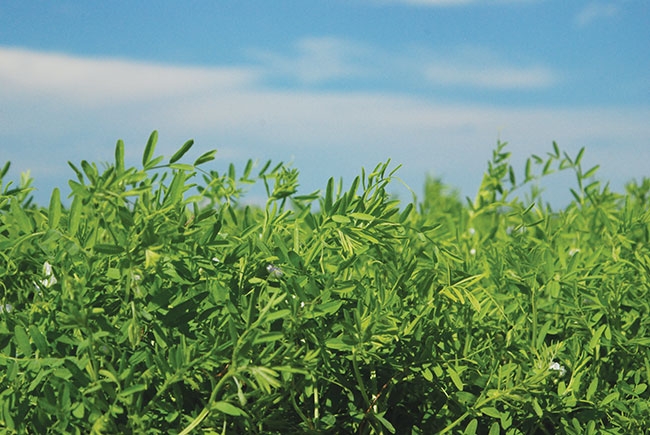
Features
Agronomy
Other Crops
New pea, lentil and chickpea varieties
Here’s a look at new pulse varieties available as Certified seed in 2015. The information comes from the Crop Development Centre (CDC) at the University of Saskatchewan, courtesy of Dr. Bunyamin Tar’an, Dr. Bert Vandenberg and Dr. Tom Warkentin, pulse crop plant breeders, and the Saskatchewan Pulse Growers. Cropping Areas refer to Crop Production Zones in the Saskatchewan Varieties of Grain Crops.
YELLOW PEA
CDC Saffron is a high yielding yellow pea with good lodging resistance. It has a round shape, medium protein content and good cooking quality. In Saskatchewan Areas 1 and 2 and in the southern part of 3, CDC Saffron yielded 106 per cent of the check variety CDC Golden, and 114 per cent in northern Areas 3 and 4.
CDC Amarillo has high yield, good lodging resistance and good Fusarium wilt resistance. It yielded 125 per cent of CDC Golden in the northern part of Areas 3 and 4, 110 per cent in the southern Areas, and 115 per cent under irrigation.
GREEN PEA
CDC Raezer has good lodging resistance and a good disease resistance package. It is a medium maturing variety with yields best suited to the northern part of Areas 3 and 4, and under irrigation where it yielded 104 per cent of the check variety. It has a smooth, round seed shape with bleaching resistance similar to CDC Striker.
CDC Limerick is a good performer with medium-tall plant growth, good lodging resistance and improved mychospherella resistance. It has a smooth, round seed with bleaching resistance equal or better than CDC Striker, and high protein concentration. CDC Limerick yields 104 per cent of the check in southern Areas of Saskatchewan and 109 per cent in northern Areas.
RED LENTIL
CDC Cherie is a small red lentil with high yield and good lodging tolerance. It yielded 109 per cent of the check CDC Maxim CL in Areas 1 and 2, and 106 per cent in Areas 3 and 4. It has good resistance to ascochyta and fair resistance to anthracnose with early/medium maturity. CDC Cherie has acceptable seed characteristics for standard small red lentil.
CDC Scarlet is a small red lentil with high yield and good lodging tolerance. It yielded 105 per cent of the check in southern Areas 1 and 2, and 103 per cent in northern Areas. It has acceptable seed characteristics for standard small red lentil. CDC Scarlet has good resistance to ascochyta and fair resistance to anthracnose with early/medium maturity.
CDC Rosie is an extra small red lentil with good lodging tolerance and plump seed. It has good ascochyta and anthracnose resistance, and has early/medium maturity.
GREEN LENTIL
CDC Asterix is an extra small green lentil with high yield and an improved disease package with good resistance to ascochyta and fair resistance to anthracnose. It has early maturity and colour retention similar to CDC Viceroy. The extra small seed size is attractive to buyers in some markets.
KABULI CHICKPEA
CDC Orion has high yield at 107 to 108 per cent of the check variety Amit (B-90) with the same maturity as CDC Frontier. Seed characteristics include ram-head seed shape, 100 mm size and a beige seed colour.
CDC Leader has high yield and earlier maturity than CDC Frontier. It yielded 110 per cent of the check variety in Area 1 of Saskatchewan and 107 per cent in Area 2. Seed size is 9 to 10 mm with ram-head seed shape and beige seed colour.
DESI CHICKPEA
CDC Jade is a specialty green desi chickpea with green seed coat and green cotyledons. It has medium/late maturity and a higher ascochyta resistance rating than the check variety Amit. CDC Jade has a medium seed size and an angular seed shape.
CDC Ebony is a specialty black desi chickpea with black seed coat and yellow cotyledons. It has good yield potential, low stature, medium/late maturity and slightly higher ascochyta rating than the check. CDC Ebony has medium seed size and angular seed shape. It yielded similar to slightly higher than Amit.
February 18, 2015 By Bruce Barker
 New lentil Here’s a look at new pulse varieties available as Certified seed in 2015.
New lentil Here’s a look at new pulse varieties available as Certified seed in 2015.